Crimson Waxcap
One of the larger Waxcaps, the Crimson Waxcap is less common than the Scarlet Waxcap but can grow in large numbers in the right conditions which means fields, meadows and heaths that have been left free of chemicals, fertilisers or ploughing.
Being fairly rare this beautiful mushroom, although edible, is better to admire and photograph unless found in large numbers.
| Mushroom Type | |
| Common Names | Crimson Waxcap (EN), Cap Cwyr Rhuddgoch (CY), Wilgotnica Karminowa (PL), Vérvörös Nedűgomba (HU) |
| Scientific Name | Hygrocybe punicea |
| Season Start | Sep |
| Season End | Dec |
| Average Mushroom height (CM) | 3-15 |
| Average Cap width (CM) | 3-15 |
Cap
3-15 cm. Deep red but fading to yellow or paler from the centre of the cap. The cap starts conical/bell shaped but will open out to flat with upturned edges in older specimens.
Gills
Fairly widely spaced, starting yellow but turning red with age. The gills can be free of the stem or slightly joined (adnexed).
Stem
3-15 cm long, 0.5-2 cm diameter. Yellow turning to red further up the stem but white and slightly rooting at the base. The stem is quite stout and fibrous.
Habitat
Fields, heaths and graveyards with short grass that have been left natural and not fertilised or ploughed for a long time.
Possible Confusion
The Splendid Waxcap (Hygrocybe splendidissima), pictured, is very similar but usually has a twisted, folded stem and the cap can feel drier.
The Scarlet Waxcap (Hygrocybe coccinea) is smaller with a thinner stem and red flesh.
The Blackening Waxcap (Hygrocybe conica) is smaller and the flesh will discolour black when bruised or even just touched.
Spore Print
White. Ellipsoid.
Taste / Smell
Mushroomy.
Frequency
Fairly rare.
Other Facts
There have been reports from North America that a few people have suffered gastric upsets from eating these mushrooms but no reports from Europe yet.
Waxcaps are becoming fairly rare due to loss of habitat so they should only be eaten when found in profusion and some mushrooms should always be left behind.


 (9 votes, average: 4.11 out of 5)
(9 votes, average: 4.11 out of 5)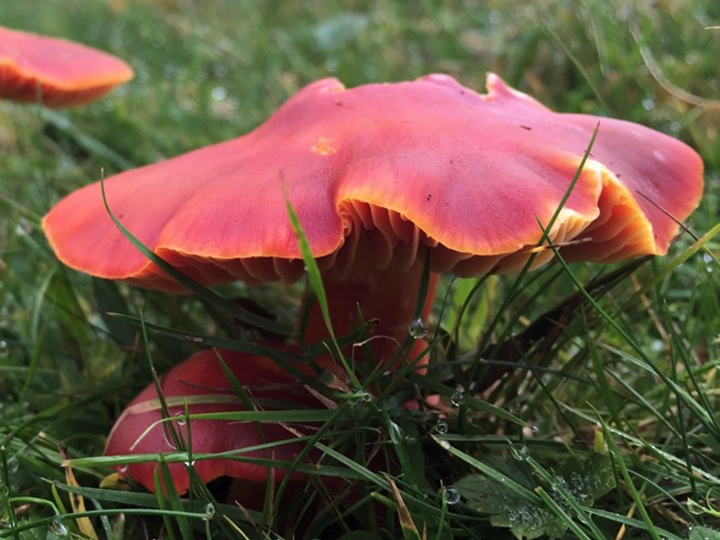















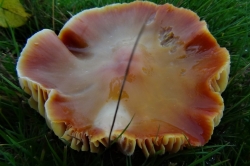
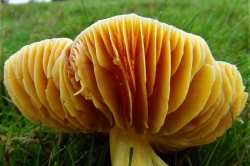
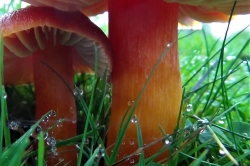
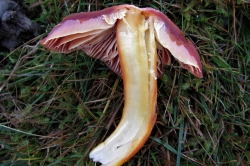
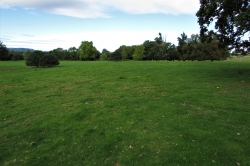
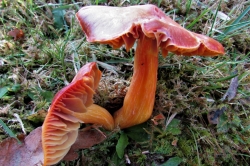






3 comments for Crimson Waxcap
Hello
I just wanted to say that I found your website by chance and found it very informative.
I think I found a crimson or scarlet wax cap this morning whilst out at work
I live in Carlisle / Northern England and had never seen one before. It’s a privilege when they’re so rare and lovely to see the colours of creation in months when there is so little colour
We think we have a little cluster of wax caps on the lawn. I’d post a photo if I could!
You can send photos for identification to [email protected]. Please ensure you send clear photos including the cap, gills and stem for mushrooms and leaves, flowers, buds, pods and a photo of the entire plant. Any additional info can help with the ID, like smells, location and size.